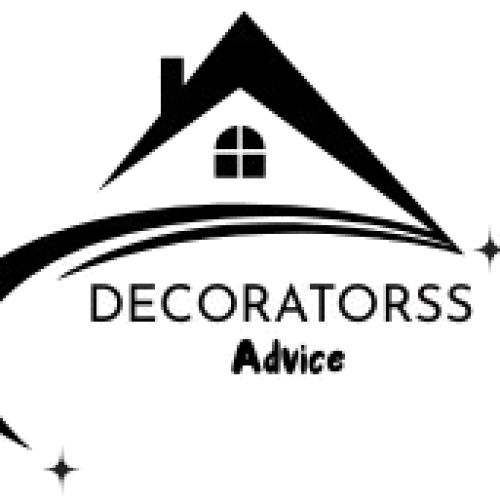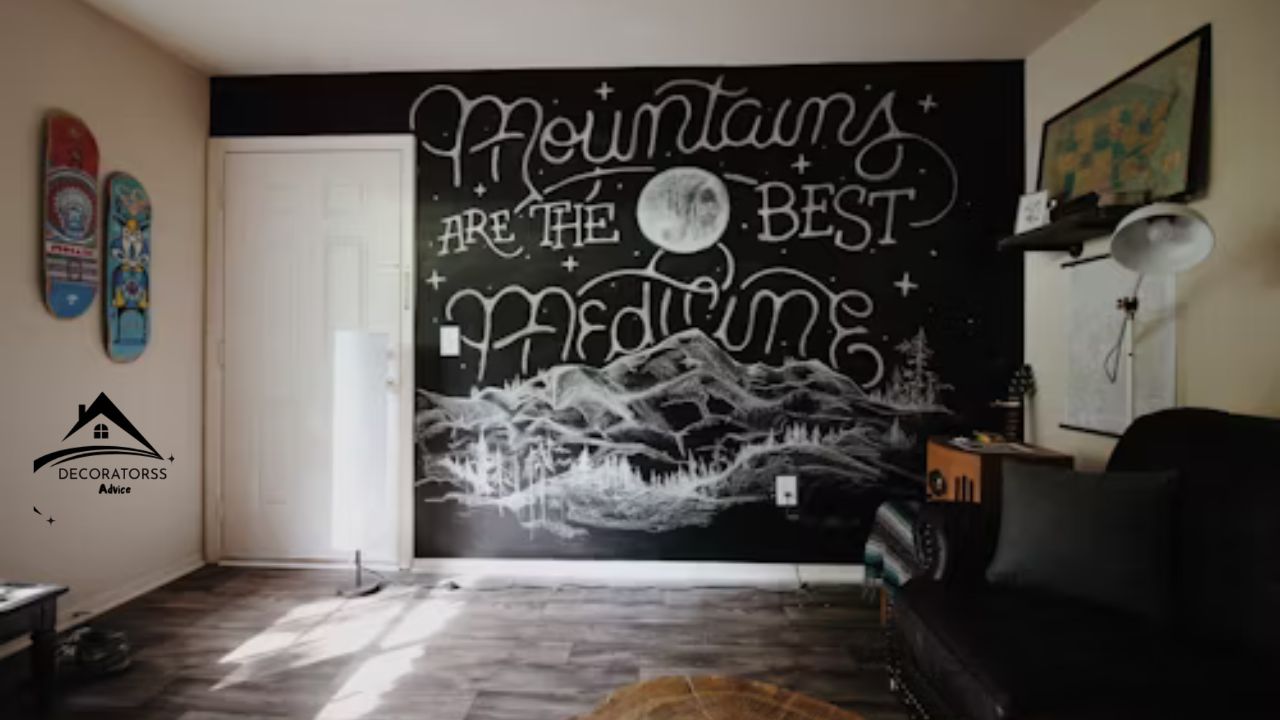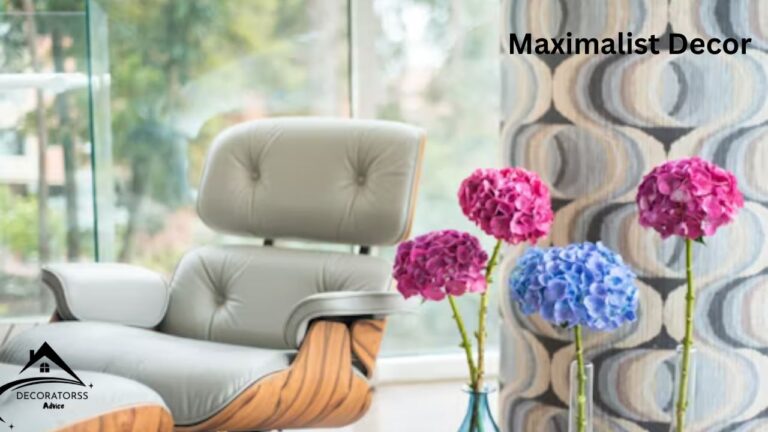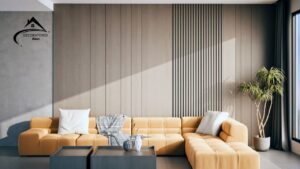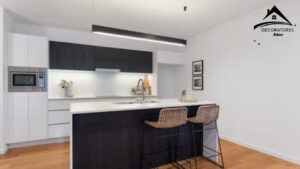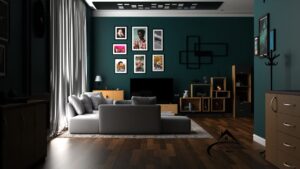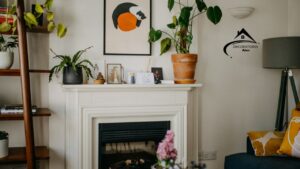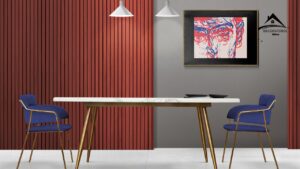Are you dreaming of a home that perfectly reflects your personality and style? Finding the right decorators advice can feel overwhelming, but it’s the crucial first step toward creating a space you truly love. This guide is packed with expert tips to help you navigate the world of interior design, whether you’re undertaking a complete renovation or simply refreshing a room.
Embarking on a decorating project can be both thrilling and a little daunting. You want to make choices that are not only beautiful but also practical and timeless. With so many styles, colors, and furniture options available, getting sound decorators advice is more important than ever. We’ll break down the process, making it simple and enjoyable.
This article will provide you with the foundational knowledge and insider secrets you need. From understanding color theory to mastering furniture layout, you’ll gain the confidence to make bold, beautiful decisions for your home.
Quick Guide to Decorating Success
| Key Aspect | Quick Tip | Why It Matters |
|---|---|---|
| Color Palette | Use the 60-30-10 rule. | Creates a balanced and harmonious look. |
| Lighting | Layer your lighting. | Adds depth, mood, and functionality. |
| Furniture Layout | Create conversation zones. | Makes a room feel welcoming and social. |
| Texture & Pattern | Mix different materials. | Adds visual interest and a tactile feel. |
| Personalization | Display meaningful items. | Makes your house feel like a home. |
The Foundation of Great Design: Core Principles
Before you start buying furniture or picking paint colors, it’s essential to understand the basic principles of interior design. This foundational decorators advice acts as a roadmap, guiding your decisions and ensuring a cohesive, polished result. Think of these principles as the secret ingredients that professional designers use to create stunning spaces.
Understanding the Importance of Balance
Balance in design creates a sense of equilibrium and visual stability. It’s about distributing the visual weight of objects, colors, textures, and space. Getting this right is a piece of decorators advice that can make or break a room’s feel.
Symmetrical Balance
Symmetrical balance is often seen in traditional interiors. It involves arranging items in a mirrored fashion around a central axis. For example, placing two identical lamps on either side of a sofa or two matching chairs flanking a fireplace creates a formal, orderly look. This approach is predictable but brings a powerful sense of calm and elegance to a space.
Asymmetrical Balance
For a more modern and dynamic feel, asymmetrical balance is the way to go. Here, visual weights are still balanced, but the objects are not identical. You might balance a large sofa on one side of the room with two smaller chairs and a table on the other. This type of balance is more complex to achieve but results in a more interesting and visually stimulating environment. It’s a fantastic piece of decorators advice for those who want a less formal space.
Radial Balance
Radial balance involves arranging elements around a central point. A classic example is a dining table with chairs arranged around it. This type of balance draws the eye inward and is often used to create a strong focal point.
Creating Rhythm and Flow
Rhythm in interior design is like the beat in a piece of music. It’s about creating patterns of repetition and contrast to create visual interest. This element guides the eye through the room, creating a seamless flow.
- Repetition: This involves using the same element—be it a color, pattern, texture, or object—multiple times throughout a space. For example, you might use the same shade of blue in your pillows, rug, and artwork.
- Progression: This is about taking an element and changing it in stages. A common example is arranging a group of candles of varying heights or displaying a collection of objects that increase or decrease in size.
- Transition: This is the element that helps the eye move smoothly from one area to another. A curved pathway in a garden or an arched doorway can serve as a transition.
The Power of Color: More Than Just Paint
Choosing a color palette is one of the most exciting—and sometimes stressful—parts of decorating. The right colors can dramatically impact the mood and perception of a space. This is where some of the most impactful decorators advice comes into play.
The Psychology of Color
Colors have a profound psychological effect. Understanding this can help you create rooms that not only look good but also feel good.
- Warm Colors: Reds, oranges, and yellows are stimulating and energetic. They can make a large room feel cozier and are great for social spaces like dining rooms and living rooms. However, use them thoughtfully, as too much can feel overwhelming.
- Cool Colors: Blues, greens, and purples have a calming and serene effect. They are perfect for bedrooms, bathrooms, and home offices where you want to create a relaxing atmosphere. These colors can also make a small room feel larger.
- Neutrals: Whites, grays, beiges, and blacks are the foundation of many design schemes. They are versatile, timeless, and provide a perfect backdrop for more vibrant accent colors. Solid decorators advice often starts with building a strong neutral base.
The 60-30-10 Rule: A Foolproof Formula
A piece of decorators advice that designers swear by is the 60-30-10 rule. It’s a simple way to create a balanced color scheme.
- 60% Main Color: This is the dominant color in your room, typically used on the walls. It sets the overall tone for the space.
- 30% Secondary Color: This color should be used for about half as much as your main color. It’s often found in furniture, curtains, or an accent wall.
- 10% Accent Color: This is your pop of color. Use it for small accessories like pillows, artwork, and decorative objects. It adds personality and visual interest.
This rule provides a structured approach, preventing the chaos that can come from using too many colors. It’s a truly invaluable piece of decorators advice for beginners.
Furniture: Functionality Meets Style
Furniture is the workhorse of your home. It needs to be comfortable, functional, and beautiful. Selecting the right pieces and arranging them correctly is crucial.
Choosing the Right Scale and Proportion
Have you ever walked into a room where the furniture felt either too big or too small? This is an issue of scale and proportion.
- Scale: Refers to the size of an object in relation to the size of the room. A massive sectional sofa will overwhelm a tiny living room, while a delicate loveseat will get lost in a cavernous one.
- Proportion: Refers to the size of objects in relation to each other. A huge coffee table paired with a small sofa will look unbalanced.
Before you buy anything, measure your room and your potential furniture. Creating a floor plan, even a rough sketch, can save you from costly mistakes. This is practical decorators advice that saves both time and money.
Creating Functional Zones
In modern homes, especially those with open-concept layouts, creating distinct functional zones is key. You can use furniture and rugs to define different areas.
- Conversation Areas: In a living room, arrange seating to encourage conversation. Sofas and chairs should face each other, not just the television.
- Reading Nooks: A comfortable chair, a small table, and good lighting can create a cozy reading nook in the corner of a bedroom or living room.
- Dining Spaces: Even in a small apartment, you can define a dining area with a rug under the table and a pendant light above.
Thinking about how you will use a space is a core tenet of good decorators advice. Functionality should always be a primary consideration.
Real User Experiences with Professional Advice
Many homeowners who have invested in professional decorators advice report a massive increase in their satisfaction with their homes.
One user, Sarah M., shared her experience: “I was completely stuck with my open-plan living area. I hired a designer for a two-hour consultation. The decorators advice she gave me completely changed everything. She suggested creating zones with rugs and rearranging my existing furniture. It felt like a brand-new, much larger space without buying a single new thing!” Sarah rated her experience 5/5 stars, highlighting the immense value of professional guidance.
Another review from Mark T. (4.5/5 stars) stated, “The best decorators advice I received was about lighting. I had one central ceiling light, and my living room felt flat and unwelcoming. The designer suggested adding floor lamps and a table lamp. The difference was astonishing—the room now has so much more depth and character.”
Lighting: The Unsung Hero of Interior Design
Lighting is one of the most overlooked but essential elements of interior design. Good lighting can make a room feel larger, brighter, and more inviting. Layering your lighting is a key piece of decorators advice.
The Three Layers of Lighting
A well-lit room incorporates three types of lighting: ambient, task, and accent.
Ambient Lighting
This is the overall illumination of a room. It’s your primary light source, often coming from ceiling fixtures like chandeliers, recessed lights, or flush mounts. It should provide a comfortable level of brightness without glare.
Task Lighting
Task lighting is focused light for specific activities like reading, cooking, or working. Examples include under-cabinet lights in the kitchen, a desk lamp in an office, or a reading lamp by a chair. Good task lighting is crucial for functionality and reducing eye strain.
Accent Lighting
Accent lighting is used to highlight architectural features or specific objects, like a piece of art, a plant, or a textured wall. Track lighting, picture lights, and uplights are common forms of accent lighting. It adds drama and sophistication to a room.
By combining these three layers, you create a flexible and dynamic lighting scheme that can adapt to any mood or activity. This is truly powerful decorators advice.
Texture and Pattern: Adding Depth and Personality
A room decorated in a single color and texture can feel flat and uninteresting. Introducing a variety of textures and patterns is how you add depth, warmth, and personality.
The Magic of Mixing Textures
Think about incorporating a range of materials. Mix smooth surfaces like glass and metal with rougher textures like linen, wool, and wood.
- Living Room: Pair a smooth leather sofa with a chunky knit throw, velvet pillows, and a jute rug.
- Bedroom: Layer a soft cotton duvet with a silk quilt and a faux fur blanket.
- Kitchen: Contrast sleek stainless steel appliances with a rustic wooden cutting board and ceramic tile backsplash.
Feeling different textures as you move through a space makes it more engaging and sensorial. This is subtle but effective decorators advice.
How to Mix Patterns Like a Pro
Mixing patterns can be intimidating, but a few simple rules can help.
- Vary the Scale: Combine a large-scale pattern (like a bold floral) with a medium-scale pattern (like a stripe) and a small-scale pattern (like a geometric print).
- Stick to a Color Palette: Ensure all your patterns share a common color or two. This will tie them together and create a cohesive look.
- Balance with Solids: Don’t let patterns overwhelm the room. Make sure to include plenty of solid colors to give the eye a place to rest.
Embracing patterns is a fantastic way to express your personality and add a unique touch to your home.
The Business of Decor: Net Worth and Influence
While the primary focus of decorators advice is on creative principles, the industry itself is a massive business. Top interior designers are not just artists; they are influential entrepreneurs with significant personal brands.
Understanding the Financial Side
The net worth of famous interior designers can be substantial, often running into the tens or even hundreds of millions of dollars. Designers like Kelly Wearstler, Nate Berkus, and Joanna Gaines have built empires that extend far beyond client consultations. Their wealth comes from multiple streams:
- High-End Residential and Commercial Projects: Fees for these projects can be enormous.
- Product Lines: Many top designers have lucrative licensing deals for furniture, lighting, textiles, and home accessories with major retailers.
- Book Deals and Media Appearances: Best-selling books and television shows significantly boost both their income and public profile.
- Brand Endorsements: Their influence makes them valuable partners for a wide range of brands.
While you may not be aiming for this level of fame, understanding the business side highlights the value placed on expert decorators advice. It’s a skill and a service with tangible financial worth.
Personalizing Your Space: Making It Your Own
Ultimately, the best decorators advice is to create a home that tells your story. Your space should be a reflection of who you are, what you love, and the life you live.
Displaying Collections and Artwork
Don’t hide away your treasures. Whether you collect vintage cameras, beautiful ceramics, or simply have photos you love, find creative ways to display them.
- Gallery Walls: A gallery wall is a classic way to display a mix of art, photos, and objects. Lay out your arrangement on the floor first to get it just right.
- Floating Shelves: These are perfect for displaying collections without taking up floor space. Arrange items with varying heights and shapes for a dynamic look.
Incorporating Sentimental Items
That quirky souvenir from your favorite trip or the armchair you inherited from your grandmother has a story. Incorporating these sentimental items adds a layer of meaning and history to your home that you can’t buy in a store.
The goal is to curate a space that feels authentic to you. Don’t be afraid to break a few “rules” if it means creating a home you are truly happy in. The most memorable homes are those filled with personality. This is the ultimate piece of decorators advice.
Final Words of Encouragement
Decorating your home should be a joyful and creative process. Start small, trust your instincts, and don’t be afraid to experiment. Use the decorators advice in this guide as your starting point, but always let your personal style be your North Star.
Remember that a home is not decorated overnight. It evolves over time, just as you do. Embrace the journey of creating a space that is not just beautiful, but a true reflection of you. With a little knowledge and confidence, you can transform your house into a home that you will love for years to come. The best decorators advice empowers you to become your own designer.
Even with the most thoughtful decorating scheme, you’ll sometimes run out of space for extra pieces—whether it’s seasonal decor, statement items you’re only rotating in occasionally, or heirlooms you want to protect but not display right away. In those cases, renting self storage like the storage units Calgary can really help. They offer a clean, secure spot to stow furniture, excess rugs, or large accessories until you’re ready to bring them back into your space. Choosing a facility with climate control and easy access keeps your belongings safe, allowing your home to stay curated and uncluttered while you refine your decor vision.
Frequently Asked Questions (FAQs)
What is the most important piece of decorators advice for a beginner?
The most crucial piece of decorators advice for someone just starting is to create a mood board and a plan before buying anything. Gather images, fabric swatches, and paint chips that you love. This will help you define your style and create a cohesive vision, preventing costly impulse purchases and ensuring all your elements work together harmoniously.
How can I make my small room look bigger?
There are several great tricks. Use light colors on the walls, as they reflect light and make a space feel more open. Incorporate mirrors to create the illusion of depth. Choose furniture with legs (like a mid-century modern sofa) to create a sense of spaciousness underneath. Finally, ensure you have good, layered lighting to keep the room bright and airy.
What is the 60-30-10 rule I keep hearing about?
The 60-30-10 rule is a classic piece of decorators advice for creating a balanced color scheme. It suggests that 60% of your room should be a dominant color (usually walls), 30% should be a secondary color (furniture, curtains), and 10% should be an accent color (pillows, accessories). This formula provides a simple yet effective framework for combining colors without overwhelming a space.
Is it okay to mix different wood tones in a room?
Absolutely! Mixing wood tones is a great way to add depth and character. The key is to pick a dominant wood tone and then use one or two other tones as accents. To make it look intentional, try to ensure the undertones (warm, cool, or neutral) of the woods are compatible. Repeating each wood tone at least twice in the room can also help create a cohesive feel.
How do I choose the right size rug for my living room?
A common decorating mistake is choosing a rug that’s too small. The best decorators advice for rug size is that, at a minimum, the front legs of all your main seating pieces (sofa, chairs) should sit on the rug. For a more luxurious and cohesive look, choose a rug that is large enough for all the furniture in the seating area to sit completely on it. This helps to define the space and make it feel more grounded.
